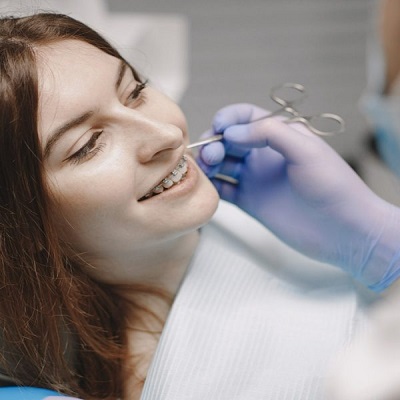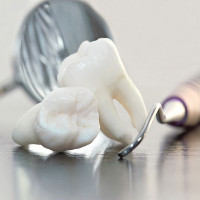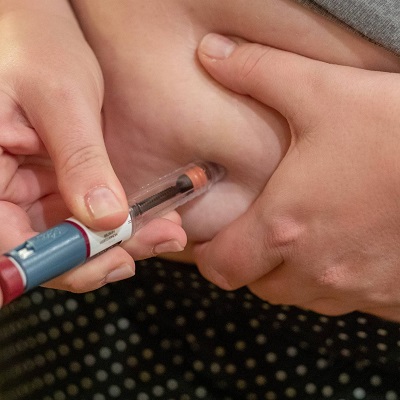Invisalign vs. Traditional Braces: A Dubai Perspective

Strong 8k brings an ultra-HD IPTV experience to your living room and your pocket.
When it comes to straightening teeth, Dubai residents have a variety of options to choose from, with Invisalign and traditional braces being two of the most popular treatments recommended by Orthodontists in Dubai. Each method offers its own set of benefits and drawbacks, and deciding between them can depend on personal preferences, lifestyle, and the severity of the dental issue. Understanding the differences between Invisalign and traditional braces is essential for making an informed choice that aligns with your goals.
In this article, we will explore how Invisalign and traditional braces work, the advantages and disadvantages of each, and how orthodontists in Dubai are helping patients choose the best solution for their smiles.
How Invisalign Works:
Invisalign is a modern orthodontic treatment that uses clear, removable aligners to gradually straighten teeth. Unlike traditional braces, which rely on metal brackets and wires, Invisalign aligners are custom-made to fit your teeth. They apply gentle pressure to move your teeth into the desired position, and because they are clear, they are far less noticeable than metal braces.
Advantages of Invisalign:
Discreet Appearance: One of the primary reasons people choose Invisalign is its subtle appearance. Since the aligners are clear, they are nearly invisible, making them ideal for those who prefer a more discreet treatment option.
Comfort: Invisalign aligners are made of smooth plastic, which reduces the risk of irritation to the gums and mouth, a common issue with traditional metal braces.
Removability: You can remove Invisalign aligners when eating, drinking, brushing, and flossing, making it easier to maintain your oral hygiene throughout treatment. This is a major advantage over traditional braces, where food can easily get stuck in the brackets and wires.
No Food Restrictions: Since the aligners are removable, you don’t have to worry about avoiding certain foods, which can be a challenge with traditional braces.
Disadvantages of Invisalign:
Discipline Required: Since Invisalign aligners are removable, you must wear them for at least 22 hours a day to ensure effective treatment. This requires a high level of self-discipline.
Limited to Mild to Moderate Cases: Invisalign is often best for individuals with mild to moderate orthodontic issues. More complex dental problems, such as severely crooked teeth or bite issues, may not be suitable for Invisalign and may require traditional braces.
Cost: Invisalign can sometimes be more expensive than traditional braces, depending on the complexity of your treatment.
How Traditional Braces Work:
Traditional braces have been used for decades to correct misaligned teeth and bite issues. They consist of metal brackets that are affixed to the teeth, connected by a wire that is periodically adjusted by your orthodontist. Over time, the tension applied by the wire gradually moves the teeth into their correct positions.
Advantages of Traditional Braces:
Effective for Severe Cases: Traditional braces are highly effective for treating severe dental issues, such as complex bite problems, crooked teeth, or large gaps. They can tackle a broader range of orthodontic issues than Invisalign.
No Compliance Issues: Since traditional braces are fixed to the teeth, you don’t have to worry about remembering to wear them. This makes them a great choice for younger patients or individuals who may struggle with compliance.
Variety of Options: Today, traditional braces come in different materials and styles, including ceramic braces and lingual braces (which are placed on the back of the teeth for a more discreet appearance). This provides some flexibility in terms of aesthetics.
Disadvantages of Traditional Braces:
Visibility: Metal braces are highly visible, which can be a concern for many patients, especially adults or those in the public eye. This is a significant downside when compared to the virtually invisible nature of Invisalign.
Discomfort: The metal brackets and wires can cause irritation and discomfort, particularly when they are adjusted. Some patients may also experience mouth sores from the brackets rubbing against the inside of their lips and cheeks.
Oral Hygiene Challenges: Maintaining oral hygiene with traditional braces can be more difficult, as food can get stuck in the brackets and wires. This can lead to plaque buildup, tooth decay, and gum disease if not properly cleaned.
Food Restrictions: With traditional braces, there are several food restrictions. Foods that are sticky, hard, or chewy can damage the braces or get stuck, requiring extra care and effort during meals.
The Cost of Invisalign vs. Traditional Braces in Dubai:
The cost of orthodontic treatment in Dubai can vary depending on the complexity of the case, the type of braces chosen, and the length of treatment. On average, Invisalign tends to be more expensive than traditional braces, primarily because of the custom-made aligners and the technology used in the treatment planning process.
However, it’s essential to consider that the cost of Invisalign includes fewer follow-up visits to the orthodontist, as patients typically require fewer adjustments compared to those with traditional braces. When evaluating the cost, it’s important to consult with an orthodontist in Dubai to get an accurate estimate based on your unique dental needs.
Treatment Duration: Invisalign vs. Traditional Braces:
The duration of orthodontic treatment can vary based on the severity of the dental issue being addressed. In general, Invisalign treatment tends to be faster for mild to moderate cases because the aligners are designed to make gradual adjustments. Treatment can typically take between 12 to 18 months.
Traditional braces may take longer, especially for more complex cases, with treatment lasting anywhere from 18 months to 3 years. However, the precise duration depends on the patient's specific needs, the severity of the dental issues, and the type of braces used.
Which Option Is Right for You? A Dubai Perspective:
Deciding between Invisalign and traditional braces ultimately comes down to your unique dental needs, lifestyle, and budget. Here are some factors to consider when making your decision:
Ideal Candidates for Invisalign:
Adults and teenagers who are looking for a more discreet orthodontic solution
People with mild to moderate orthodontic issues, such as small gaps, slight crowding, or minor bite problems
Those who are committed to wearing the aligners consistently for the recommended amount of time
Individuals who prioritize comfort and convenience and are willing to pay a premium for Invisalign’s benefits
Ideal Candidates for Traditional Braces:
Patients with severe misalignments or complex bite issues that require more robust treatment
People who prefer a set-it-and-forget-it treatment without the responsibility of remembering to wear aligners
Teenagers or younger children who may not be as diligent with removable appliances
Individuals on a budget who are looking for a more cost-effective treatment option
The Role of Orthodontists in Dubai:
Orthodontists in Dubai are highly skilled professionals who are well-versed in the latest orthodontic technologies. Whether you opt for Invisalign or traditional braces, seeking the expertise of an experienced orthodontist is essential for ensuring the best possible results. These specialists will assess your teeth and bite, discuss your treatment options, and help you make an informed decision based on your dental goals and lifestyle.
Choosing the Right Orthodontist:
When selecting an orthodontist in Dubai, consider the following:
Experience and credentials: Ensure your orthodontist is licensed and has extensive experience in both Invisalign and traditional braces treatments.
Technology: Look for clinics that use advanced diagnostic tools, such as 3D imaging and digital treatment planning, to create precise and effective treatment plans.
Patient reviews: Read testimonials from other patients to get an idea of the quality of care provided by the orthodontist.
Treatment options: Choose an orthodontist who offers both Invisalign and traditional braces so you can explore all your options before making a decision.
Conclusion:
Invisalign and traditional braces each offer unique benefits, and the choice between the two depends largely on your specific dental needs, aesthetic preferences, and lifestyle. While Invisalign is ideal for those seeking a discreet, comfortable, and convenient treatment option for mild to moderate cases, traditional braces remain the go-to solution for complex dental issues and patients who require more robust treatment.
Note: IndiBlogHub features both user-submitted and editorial content. We do not verify third-party contributions. Read our Disclaimer and Privacy Policyfor details.







